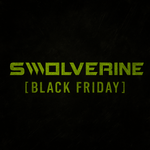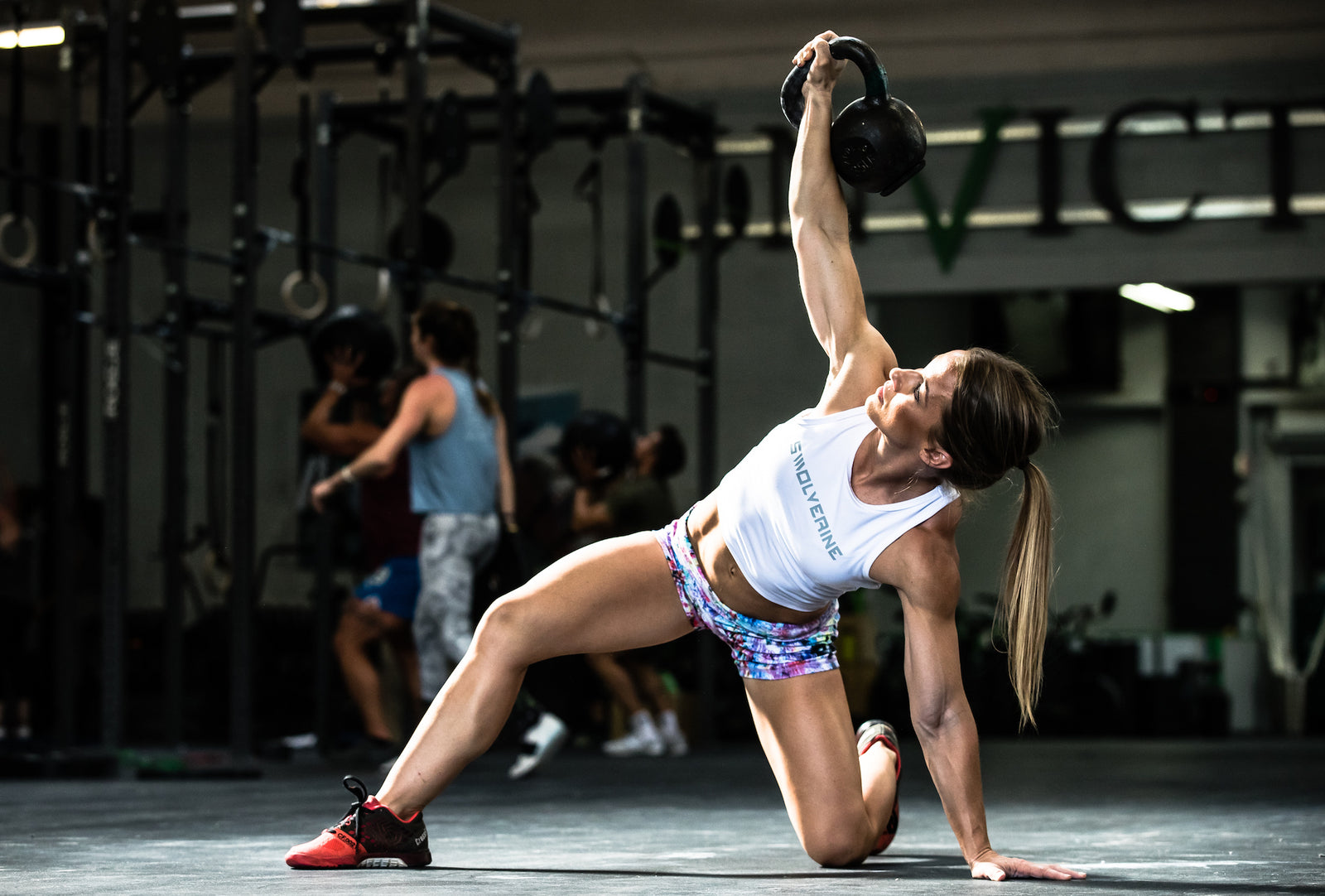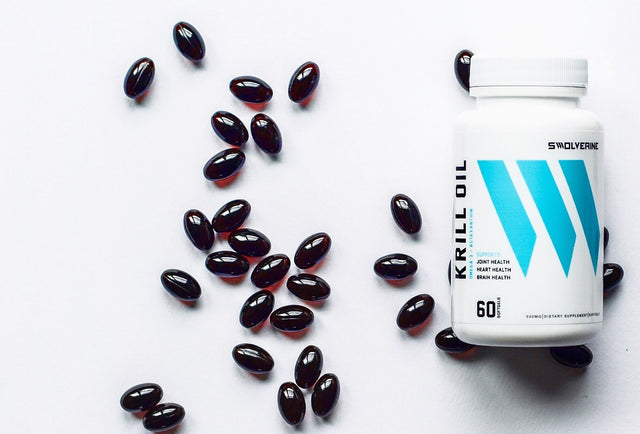While there is no one basic kettlebell move or group of movements that are better than others, kettlebells can be used for just about anything which is what makes them so unique. You can build strength, size, and agility, and even shred unwanted body fat. Before you jump right into trying all the advanced kettlebell movements that you see fitspos on the internet do, it’s important to master the basics. This means having a foundational understanding of the movements in order to form the future of your training techniques and exercises. We’re going to help you do just that in this quick guide to the 8 basic kettlebell movements every athlete should master.
Kettlebell Movements Create Full-Body Tension
Unlike machines, free-weight movements create full-body tension, which is the key to developing a strong swing through kettlebell movements. The following quick tips are going to help you reap the most benefits from your hard kettlebell workouts so you can be a lean machine in no time.
A Strong Stance
Full-body tension starts with a strong stance. Your feet should be about shoulder-width wide with your toes pointed at 11 and 1 o’clock or straight forward (depending on flexibility and strength). Your head should be neutral to start, shoulders squared off, and feet rooted strongly into the ground.
Body Awareness
As you start the swinging motion of the kettlebell movements, you want to begin by moving your weight into your heels, shifting back and forth a few times. With a stable connection to the ground with your feet, this will be your most powerful position. Have body awareness throughout the movements and as the weights increase, your feet should be the stronghold that the rest of your body relies on.
Core Engagement
In your strong starting stance position, bracing the core is crucial to protecting your back and empowering your legs to do the work for you. More often than not, the arms are ‘just along for the ride’ while the remainder of the body creates the tension, force, and torque needed to get that kettlebell from the ground and into the air. Core engagement can be thought of in a simple role-play. Imagine you’re standing there and someone is going to walk up to you and punch you. What do you do? You take a deep breath and pull your core section in nice and tight to brace for impact. This is the same tightening you need to have when someone says “brace your core” or “engage your core”. Tuck the tailbone and anticipate the punch to the stomach.
Single Arm Kettlebell Rack Position
The kettlebell rack position is simple, straightforward, and often messed up. When you grab the horns, keep the bell on your chest with your wrist straight. Ensure that your elbow is nice and tight up against the ribs and create a nice little cradle for the bell to sit in with your arm. In doing so, you need to make sure that your lat is engaged in creating a great amount of tension in the armpit.
Lat Engagement
An easy way to think of engaging your lats is to imagine a medium-sized ball, such as a lacrosse ball, tennis ball, or racquetball, between your bicep and your ribs. Then, as you hold that kettlebell with long arms, squeeze the imaginary ball and this will engage the lats.
**A Note on Posture: Without good posture, you put undue stress on the body and the muscles that are activating for the kettlebell movements. If you prohibit your muscles from working correctly, the movement is not as effective as it could be and you’re going to get less out of your workouts.*
Don't Forget To Breathe!
When you’re bracing your body, squeezing your core, engaging your lats, and rooting your legs deep into the ground, it can be easy to forget to breathe. To get the most out of your kettlebell movements though, you need oxygen, and to get that oxygen, you need to breathe. Not sure if you’re bracing enough? Have someone poke you or try to nudge you over. If you fall as fast as a pencil, you’re not bracing hard enough.
8 Kettlebell Movements To Master
#1 Kettlebell Deadlift & Kettlebell Deadlift High Pull
This kettlebell movement starts with your feet shoulder-width apart and with the kettlebell between your legs, on the ground, in line with your heels. Hinging at the hips, pushing the booty to the wall behind you, and keeping your weight in your heels, lower until you can reach the KB. Make sure to keep your neck and your spine in a neutral position with your gaze forward and shoulders back.
Grab the kettlebell with two hands and keep your arms straight. Take a deep breath in through the nose, brace the core and the glutes to create tension throughout the entire body. As you engage your glutes, shoulders back, drive through the heels, and raise your body up with a ‘proud chest’. Fully extend the hips, tightening the quads and stand nice and tall at the top (do not lean back or arch the back). Repeat the motion back to the floor, gently tapping the kettlebell on the ground as you move into your next repetition (do not slam the bell into the ground).
As you can see in the video, once you master the kettlebell deadlift, you can move into the second kettlebell movement, the kettlebell deadlift, and high pull. Generating force from the hips, you can accelerate the movement by 'chicken winging' the elbows, keeping the core tight and good posture, bringing the KB as high as you can without leaning forward or back, and descending to the starting point.
#2 Kettlebell Swing (Russian)
The kettlebell swing is arguably the most recognized and foundational movement. It should be the first move you master after you learn proper kettlebell deadlift form and before you move onto any other kettlebell movement. Take your time with this comprehensive movement – it’s a little more complicated than it looks.
Beginning with your feet shoulder-width apart and your toes facing towards 11 and 1 (like on a clock). Place the kettlebell on the ground in front of your toes. Similar to the deadlift, with your shoulders tucked back and lats pulled down, hinge at the hips pressing the booty to the wall behind you. Reach out (not reach forward) and grab the kettlebell with two hands on the handle. From this position, your knees should be directly over your ankles, creating a substantial amount of tension in your quads and hamstrings in order to ‘load’ the muscles before you generate force.
Take a deep breath in through your nose, brace the core and hike (like a football) the kettlebell back between your legs with your lats until your forearms are touching your inner thighs. After you reach the full extension, generate force and power THROUGH THE HIPS (not the arms or upper body) by snapping the hips, standing up, and keeping tension throughout the entire body, opening the hips at full extension/top of the swing. You want to see the kettlebell reach chest/shoulder height before gravity takes it back down.
On the descent, gravity will bring the bell back down and you’ll want to engage your lats to speed it up. When your upper arms come back down and touch your rib/side chest area, hinge the hips backward and keep the bell above the knees as it swings back though (never below, this is a hinge movement, not a squat). Drive through the HIPS and repeat the motion. Keep the feet firmly planted into the ground engaging all the muscles of the foot. Exhale on the upswing and inhale on the downswing.
#3 Single Arm Kettlebell Swing
The single-handed kettlebell swing (also known as the one-arm kettlebell swing or one-handed kettlebell swing) is the same movement as the two-handed, but with the positioning of only one hand on the horns/handle. We do not recommend performing this movement if you have not mastered the two-handed kettlebell swing.
With this movement, you’re going to want to really focus even harder on engaging the hips and legs and do not lift with the shoulder. Keep the arm straight, bring the wrist to the inner thighs, and swing to the chest. After you master the single-arm kettlebell swing, you can graduate into a dual-arm kettlebell swing, as shown in the video.
#4 Goblet Squat
First, you’ll want to master the proper bodyweight squat technique. After you do this, you can grab a kettlebell and perform a goblet squat. You can do this two different ways:
- Position the hands on the bell with the horns facing down
- Holding the sides of the horns with the kettlebell in an upright position
Either way works great and it’s about finding what feels most comfortable for you. Begin by getting into your squat stance; your feet should be between the hip and shoulder-distance apart. Bring the kettlebell to your chest, engaging the lats creating the tension in the armpits, and keeping your elbows up. Take a deep breath in and begin to bend the knees, slightly pushing the hips back and descending into the squat with your chest high and proud.
Drop into the full squat with the hip crease reaching parallel or just below the knee with shoulders back and chest high. The knees should track in line with the toes. Ascend upwards, keeping the kettlebell nice a tight on your chest, making sure not to lean forward or backward creating unnecessary tension on the back. Having trouble reaching the full position? Make sure you’re warmed up and you’ve done your mobility drills.
#5 Kettlebell Clean
The beginning of the kettlebell clean is just like the beginning of the one-handed kettlebell swing. With the kettlebell clean though when the kettlebell reached the waistline level on the upswing, you’re going to want to change the trajectory of where the bell is going to end up. At the arc of the swing, pull the kettlebell into the chest with the elbow traveling up and out. Get under the kettlebell and punch directly into the rack position that we talked about a few movements before. To restart the movement, simply un-punch the kettlebell from the rack position, keeping the kettlebell close to your body as you track it back down into your starting position/starting swing.
#6 Kettlebell Shoulder Press
You can do this movement with one or two arms. This movement starts and stops with the kettlebell in the rack position right below the chin and full-body tension. Engaging the shoulder, keeping a tight core, and standing nice and tall, press the kettlebell into an overhead position. When pressing, the elbow stays facing forward and up. Keeping the elbow facing forward will build a full range of motion strength and muscle memory that will translate into many other movements of your training (including push press).
At the top of the movement, make sure that your palm is facing the front, your knuckles are facing the ceiling, and your hand is relaxed. To bring the KB back down, bend the elbow and track the weight down into the rack position with the fist under the chin, the lats engaged with the armpit, and the bell resting between the forearm and the bicep in the ‘nest’. For a shoulder press, you want to keep tension throughout the body and not use the momentum from the legs for the entire movement.
#7 Kettlebell Clean and Push Jerk
The Kettlebell Clean and Press incorporates both the clean and the press together as one full-body movement. Begin by straddling the kettlebell on the ground with your feet a little bit wider than shoulder-width apart and your feet pointed towards 11 and 1 like on a clock. Hinging at the hips with a straight back and your gaze facing forward, clean the kettlebell up into your rack position. Take the weight, violently dip, and use the force to lift the weight up and overhead. Before you reach full extension, get under the weight and stand tall as you get into your push jerk lockout.
From the lockout position, bring the kettlebell down into the rack position. From here, lower the bell into the swinging position (like the single-handed kettlebell swing). From here you can swing back into the rack and press it out or you can clean from the ground with your other arm. After you master the single-arm, you can graduate into a dual kettlebell clean and push jerk movement practice.
#8 Kettlebell Snatch and Kettlebell Squat Snatch
Ah, the kettlebell snatch. This is one of the most effective strength-building kettlebell movements in addition to building muscular endurance. That being said, the benefits can only be reaped if the movement is performed with proper mechanics and movement patterns. We do not recommend performing the kettlebell snatch unless you have mastered the one-handed swing as well as the one-handed high pull (not covered in this article).
Begin the KB snatch the same as you would start the one-handed swing. Using a forceful hip thrust and upward motion. Once the kettlebell reached the waistline, begin to ‘chicken wing’ the elbow up high, getting underneath the KB and punching it to the sky. In this motion, you will force the KB to flip over onto the back of the hand/wrist as you reach the top of your movement and full extension of the arm (the lockout). The shoulder is packed in tightly and the bicep locks into the ear (very important to not have the arm behind the ear). The wrist should be straight with the fingers facing forward and the knuckles towards the ceiling like superman (or woman).
To descend out of this kettlebell movement, relax and bend the arm at the elbow, allowing the kettlebell to roll off the wrist. Keeping the weight close to the body, push the hips back to begin the backswing. The power of your movement comes from the engagement of the glutes and hamstrings, providing the ‘violent’ hip movement needed to perform the kettlebell snatch.
Basic Kettlebell Movements - In Conclusion
The best advice we can give you is to master the basic kettlebell movements and to take it slow while you’re learning them. Listen to your body during your movements and workouts – there is always a modification or lower weight option available for you to choose so that you can work from your own capacity. Over time, you will find that your capabilities increase and your limitations decrease. Soon enough, you’ll be a master of kettlebells and be well on your way to building strength, size, agility, and even shredding unwanted body fat.
Looking for a product that is going to help induce greater improvements in exercise endurance and athletic performance, resulting in improved times, more peak power, and stronger lifts?!
SWOLVERINE is an endurance athlete and active lifestyle brand. Made for the elite athlete, and the strong-willed our products were designed to fuel your athletic performance. We perform when you perform.
We believe that everyone can optimize not only their athletic performance but their human potential. The way we believe we can optimize performance is through transparency, clinically effective doses, and clinically proven ingredients with evidence-based outcomes. We provide the nutrients you need to power your active lifestyle.








